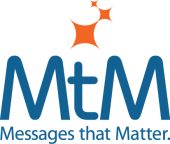Based on early results from my on-going survey, product marketing professionals say it takes too long to envision and launch a marketing campaign.
The primary reason for this inefficiency is that a lot of time is devoted to figuring out what to say every time you initiate a marketing campaign. Then there’s the slow, painful process of getting final approval.
One way to solve the problem is to adopt a positioning process that produces a detailed message strategy and a rationale document that summarizes the research used to converge on your message strategy. But positioning takes time, you say.
Ironically, by taking the time to go through a positioning process for your product, you’ll save a huge amount of time that can be devoted to other activities on your “todo” list. That’s because most of the time devoted to a positioning process is focused on creating a message strategy that becomes the foundation for everything you do in marketing.
Rather than spend significant time figuring out what to say in every marketing communication, you execute your message strategy which includes a positioning statement, three to four support points and as much detail as necessary to support all marketing communications and situations. Your message strategy is like a recipe for how to communicate in every aspect of your marketing efforts. Follow the recipe and you get a good dish…. ah story!
Lack of time is one major reason many companies haven’t implemented a formal process for positioning. However, implementing a formal process is one of the few ways product marketing and marketing departments can improve efficiency.
An investment in the time necessary to get your message strategy right during the positioning process saves a huge amount of time every time you use it. Instead of trying to figure out what to say in the latest marketing copy, the focus is on how to adapt the message strategy to a particular situation, and which pieces of your message strategy to use.
Adopt a formal process for positioning like the one described in my eBook and you’ll eliminate the following time-wasters that plague most marketing campaigns:
Debating the theme for your marketing campaign
A positioning statement – created during your positioning process – is a short, declarative sentence that addresses the target market’s most pressing problem by expressing a benefit. Your positioning statement becomes the theme for everything you do in marketing.
Rather than spend hours and even days debating the theme for your latest marketing campaign, you already know. It’s your positioning statement, which makes it clear why the target market should care about your claim and take action.
The reaction you want to your positioning statement is “that’s interesting. Tell me more. How do you do it?” Support points unfold your story in more detail and explains how you deliver on the promise made in the positioning statement. They make up your time-saving message strategy.
Whether you are creating a brochure, an e-mail campaign, a press release or a PowerPoint presentation, the question is not what benefit(s) do you want to emphasize, but rather how to adapt your positioning statement to each marketing situation, and use your support points to bolster and substantiate your claim. It’s a lot easier and faster than starting from scratch every time you create marketing materials.
Debating how to adjust the copy during the editing process
You probably know from experience how painful and time consuming it is to get buy-in to the copy for just about any marketing campaign. If your company is like most, you and others in product marketing, marketing and management spend a lot of time reviewing, editing and debating marketing copy. Since everyone has their own biases and personal preferences that they want to insert into the copy, finalizing it takes way too much time and the end result is a watered-down message to the market.
An effective positioning process includes feedback loops so that key stakeholders – including management – have their say about the message to the market while it is being created rather than on-the-fly in real-time as you are creating the copy for a marketing campaign. By seeking input throughout the positioning process, you build the consensus that eliminates micro editing of marketing content and streamlines time to launch.
Explaining to the writer what to write or the agency what to create
A positioning process significantly reduces the time-consuming process of communicating to the writer or ad agency what the message should be for each marketing campaign. A positioning process produces the message strategy – what to write – and a rationale document that summaries the research that helped you converge on your message strategy.
To effectively position, you need to thoroughly research what I call the 3Cs of successful positioning – your customers, competitors and channel (how you sell). For a detailed look at the 3Cs, read this web page. An understanding of the 3C’s leads you to a positioning statement that is unique, important and believable.
In addition to documenting research that the writer can easily review and reference, the rationale document explains the thinking behind your message strategy. Add a creative brief to the mix and the initial meeting with the writer – whether an internal or external resource – is much shorter with a focus on where it matters most – creative execution of your message strategy.
In summary:
The time spent on a disciplined positioning process concentrates the input and feedback where it can do the most good – in building a solid foundation for the position you want to claim in your market. It’s also when you have the most time to listen to valid input and respond to criticism without the pressure of publication or production deadlines. Most importantly, the time invested in creating a message strategy that everyone buys into is one of the few ways marketing professionals can get more done in less time.
